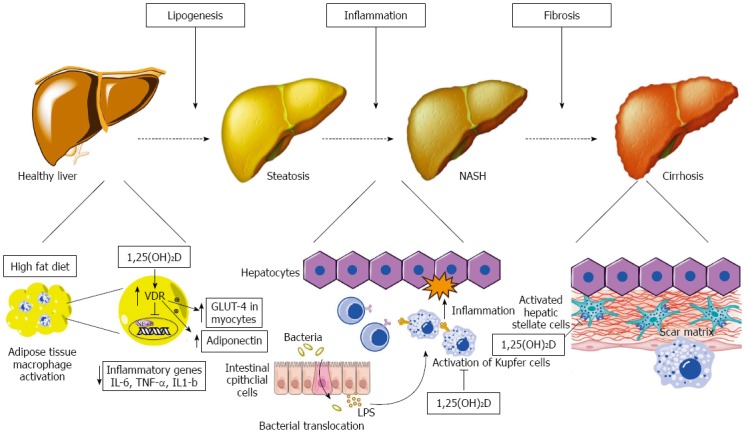Figure 2.

Schematic representation of metabolic, anti-inflammatory and anti-fibrotic effects of vitamin D on hepatocytes and non-parenchymal hepatic cells (hepatic stellate cells, Kupffer cells) in non-alcoholic fatty liver disease. Left: At the initial stage of lipogenesis, 1,25(OH)2D acts on adipocytes and inhibits NF-κB transcription, known as the pro-inflammatory “master switch”, and thus inhibits the expression of the inflammatory cytokines IL-6, TNF-α and IL-1β. It also increases adiponectin secretion from adipoycytes and enhances GLUT-4 receptor expression in myocytes, both of which improve insulin resistance; Middle: Increased gut permeability allows translocation of bacterial pathogens which can activate Toll like receptors on Kupffer cells. 1,25(OH)2D downregulates the expression of TLR-2, TLR-4 and TLR-9 in these cells and thus ameliorates inflammation; Right: 1,25(OH)2D acts on hepatic stellate cells by binding to VDR and reduces proliferation of these cells that play a major role in inducing fibrosis. VDR: Vitamin D receptor; TLR: Toll like receptor; LPS: Lipopolysacharides.
